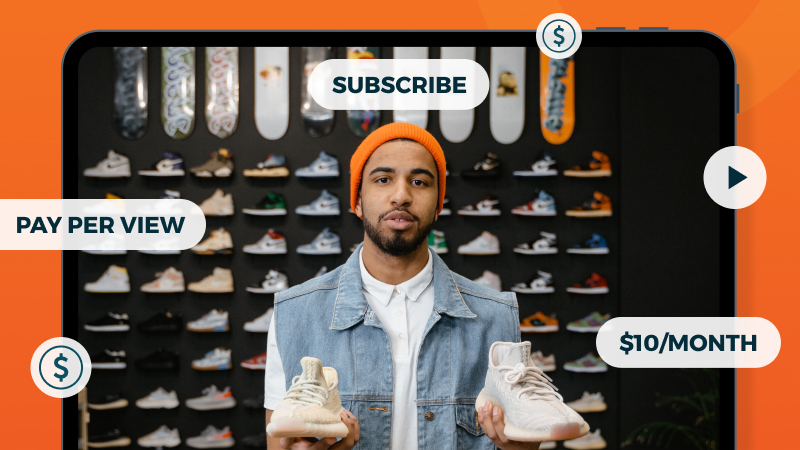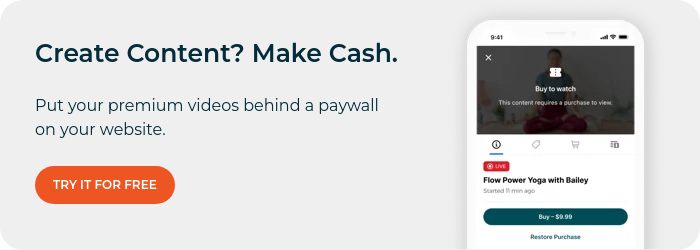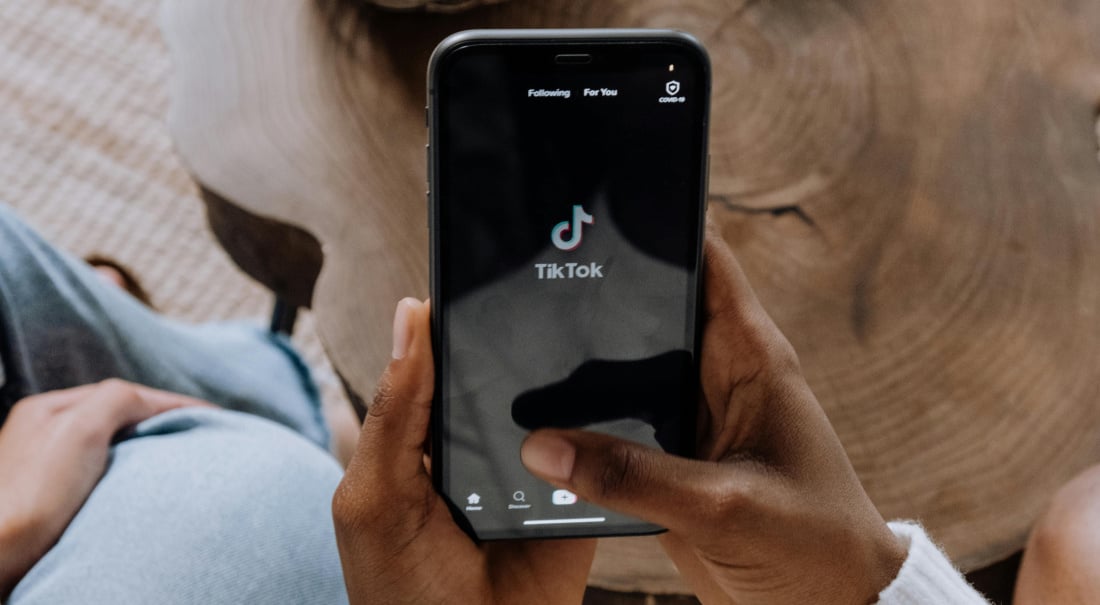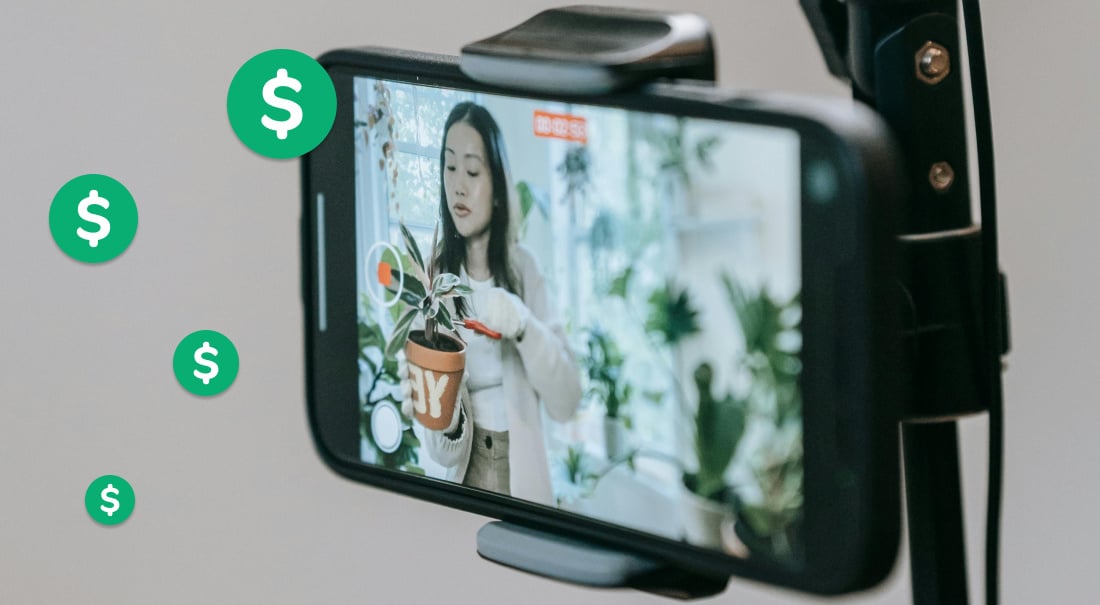
Could anyone have imagined how big of a deal online video streaming would become, especially when YouTube used to just be about posting your visits to the zoo? Originally, people were just posting about elephants, now online video content can be a viable side hustle or even a full-time career, which leads creators to look for the best monetization platforms so they can earn money and grow their audience.
However, picking the right platform for you and your content requires a thoughtful approach, as each site varies in tools, features, and reach. If you’re hoping to scale your channel and produce content in a more full-time capacity, then where you share your videos is a decision that shouldn’t be made lightly.
In this article, we’ll look at some of the top video monetization platforms around so that you can make the best, most informed decision for your channel.
What is a video monetization platform?
A video monetization platform gives creators the capability to upload, share, and distribute videos, as well as the opportunity to earn income (both on a one-time and recurring basis) from their content.
Curious how this is done? Let’s take a quick look at how video creators are earning dough on popular video monetization platforms by examining the different types of video monetization.
What are the most popular ways of monetizing video?
Every monetization platform offers unique ways for its creators to earn income. Take YouTube for example. Creators earn through the YouTube Partner Program (YPP), where they can monetize their videos with ads. The earnings will always depend on factors like CPM (cost per thousand impressions) and viewer engagement.
There are also sponsorship and partnership opportunities, live donations, merchandise and channel memberships, and things like creator funds. For example: On TikTok, creators can earn money from a creator fund based on their video performance and engagement metrics — though, in many cases, you must be posting regularly and have a minimum amount of followers.
Here are a few of the most popular types of video monetization today:
SVOD
Subscription Video on Demand (SVOD) is a digital streaming service model that allows users to access a vast library of video content in exchange for a recurring subscription fee. Unlike traditional cable or satellite TV services with fixed schedules, SVOD platforms provide subscribers with the flexibility to watch movies, TV shows, documentaries, and other content at their convenience.
This model has revolutionized the way people consume media, offering a cost-effective and personalized alternative to traditional broadcasting. Plus, viewers can find specific, niche content — like e-learning courses — on just about anything under the sun.
The convenience of on-demand streaming, coupled with a diverse range of content options and the absence of advertisements, has contributed to the widespread adoption and success of the SVOD model, making it a dominant force in the market!
TVOD
Transactional Video on Demand (TVOD) is a digital content distribution model that allows users to access and watch specific video content on a pay-per-view or pay-per-transaction basis. In the TVOD model, users make individual payments to rent or purchase a particular piece of content for a limited period (or as a permanent digital copy).
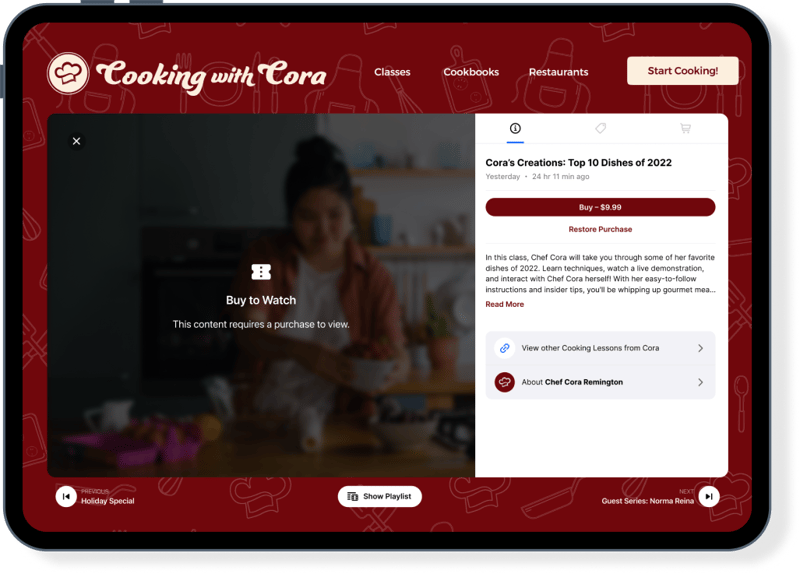
Unlike SVOD services that offer unlimited access to a library of content for a recurring subscription fee, TVOD platforms provide a more à la carte experience. Users pay only for the specific content they want to watch, allowing for flexibility in terms of content selection and cost.
TVOD is a kind of gated content: That is, digital material — videos, but also articles, white papers, and other online resources — hidden behind a virtual “gate," barrier, or paywall. To access this content, users are typically required to complete a specific action, such as providing their contact information, subscribing to a newsletter, or creating an account.
Businesses and content creators use gated content as a strategic marketing tactic. By offering valuable and exclusive material, they entice users to offer up their personal information, enabling the organization to nurture leads and potentially convert them into customers down the road. Gated content is often employed in content marketing campaigns, where high-quality and in-depth resources act as an incentive for users to share their info.
The TVOD model provides an alternative monetization strategy for content creators and distributors, complementing the subscription-based models prevalent in the streaming industry.
AVOD
Advertising-based Video on Demand (AVOD) is a digital streaming model where viewers can access video content for free, supported by advertisements. Unlike subscription-based models, AVOD platforms provide users with no-cost access to a wide range of content, including movies, TV shows, and user-generated videos. The revenue generated by these platforms comes from advertisers who pay to showcase their ads during or alongside the content.
AVOD platforms leverage targeted advertising to tailor the viewing experience to individual users, utilizing demographic information and user behavior to deliver relevant advertisements. This model is popular on platforms like Hulu and YouTube. Advertisements can take various forms, including pre-roll, mid-roll, or post-roll ads, as well as display ads on the platform.
For users, the appeal lies in the ability to consume content without a subscription fee, making AVOD an accessible option for a broad audience. However, this comes at the cost of intermittent advertising interruptions during the viewing experience. AVOD serves as a significant monetization strategy for content creators and platforms, allowing them to offer free content while advertisers benefit from exposure to a potentially large and diverse viewer base.
Bonus: live streaming
Live streaming isn’t exactly a type of monetization; it’s more like a type of content that can be monetized in unique ways because it's live. Let’s quickly define it.
Live streaming refers to the real-time broadcast of audio and video content over the internet, allowing viewers to access and watch the content as it’s happening.
Live streaming has become very popular, providing a dynamic and interactive way for individuals, businesses, and content creators to share experiences, events, and information with a massive (and even global) audience!
Live streaming encompasses a wide range of content, including live broadcasts of events, video game streams, educational courses, interviews, product demonstrations, and more. Platforms such as Twitch, YouTube Live, Facebook Live, and Instagram Live have become prominent spaces for live streaming.
Key features of live streaming include immediacy and interactivity. Viewers can engage with the content in real time by commenting, asking questions, and engaging with the streamer or others in the community. This fosters a sense of community and distinguishes live streaming from pre-recorded content.
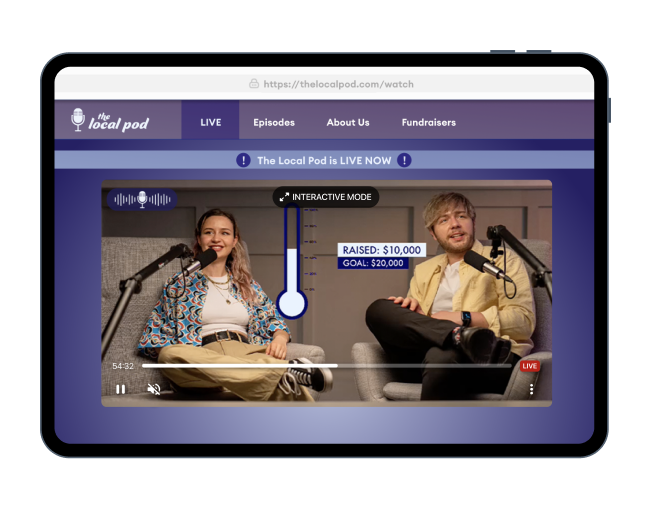
Plus, live streaming has found applications in various fields. For example, businesses use it for product launches and virtual events, content creators engage with their audience in real-time, and news organizations deliver breaking news as it happens. The advent of mobile devices with high-quality cameras and widespread internet access has contributed to the accessibility and popularity of live streaming, making it a versatile and impactful medium for communication, education, and entertainment.
Now let’s take a look at some of the best video monetization platforms around.
Switcher Studio
One of the great things about Switcher Studio is that it consolidates many of the features offered by other video hosting and monetization platforms. Then, it streamlines the workflow, publishing, and distribution of video content.
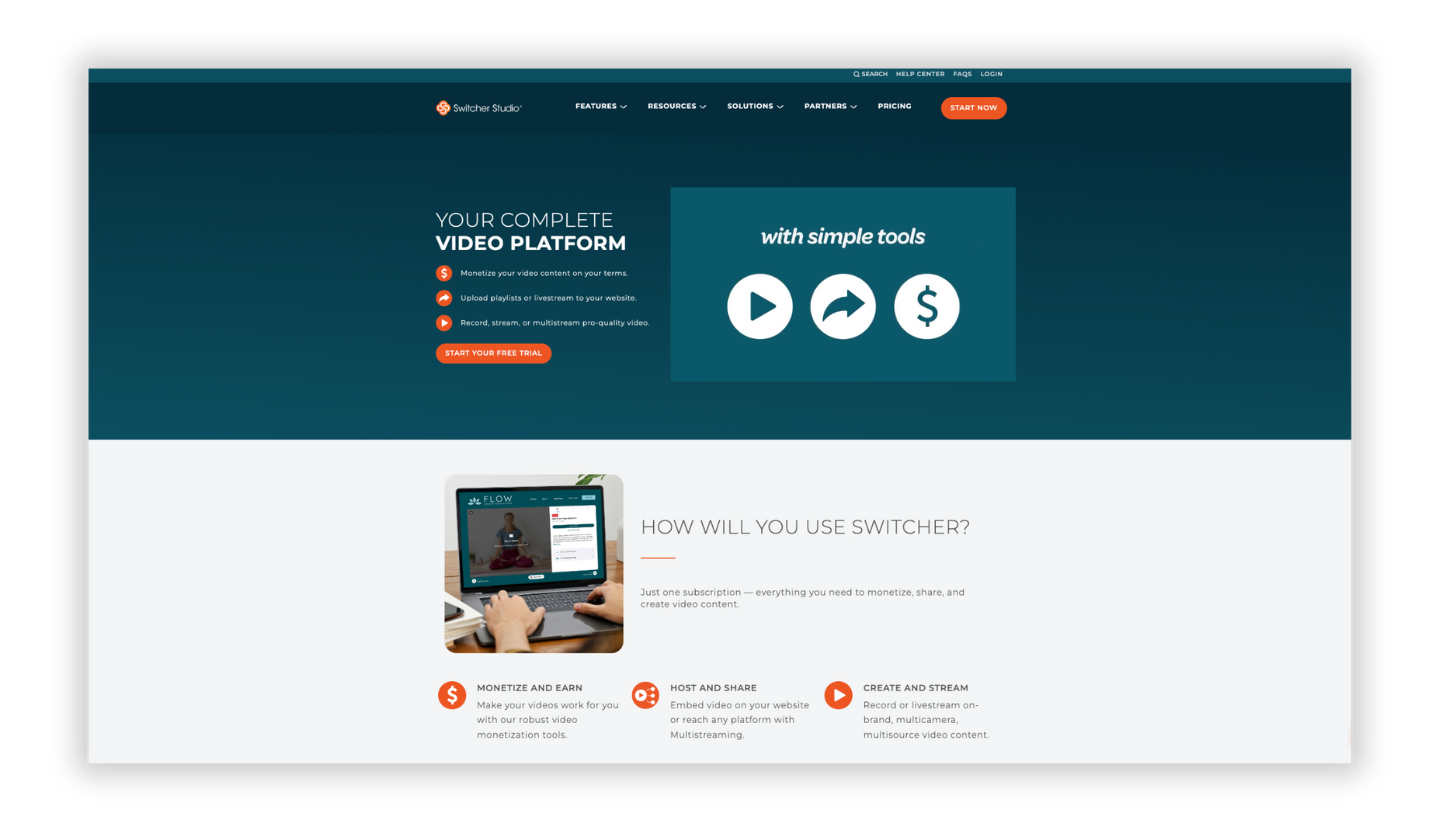
With Switcher, creators can easily . . .
Sell live
Showcase products and sell in real time (there’s even a Shopify integration).
Earn tips and donations
Connect donation platforms or virtual tip jars to video descriptions.
Leverage gated content ...
Create premium video content and then set a fixed price.
... and video subscriptions
Ready to build a following of paid subscribers? Switcher’s got you. In a few easy steps, you can transform your website into a video subscription platform. That means your supporters can pay monthly or yearly for access to your curated content collections (any combination of prerecorded videos or new livestreams). You set the price! Own your content and keep your video commerce on your website.
The Switcher Player makes it easy to turn your existing site into an online video platform devoid of competing ads, channels, or creators. Livestream to your domain, upload recorded videos, and create video playlists — all in one place.
There are also a ton of other features for video creators, like real-time video and stream editing with templated graphics, and built-in Multistreaming capabilities. So try Switcher Studio today risk-free, and your first 14 days are on us.
Vimeo
Creators can monetize their videos on Vimeo in a couple of ways, including Vimeo On Demand and Vimeo OTT (Over-The-Top) platforms.

With Vimeo On Demand, creators set their prices and choose between selling or renting their content directly to viewers. This model works well for one-time purchases or time-limited access.
Vimeo OTT enables creators to launch their own subscription streaming service with custom domain capabilities. There’s also the option to customize some of their templated site themes, though there is a limited amount to choose from.
Both Vimeo On Demand and Vimeo OTT provide detailed analytics, allowing creators to understand viewer behavior and preferences.
Uscreen
Uscreen is a comprehensive platform that allows creators to tailor their monetization strategy based on their content and audience preferences, making it a versatile solution for video monetization.
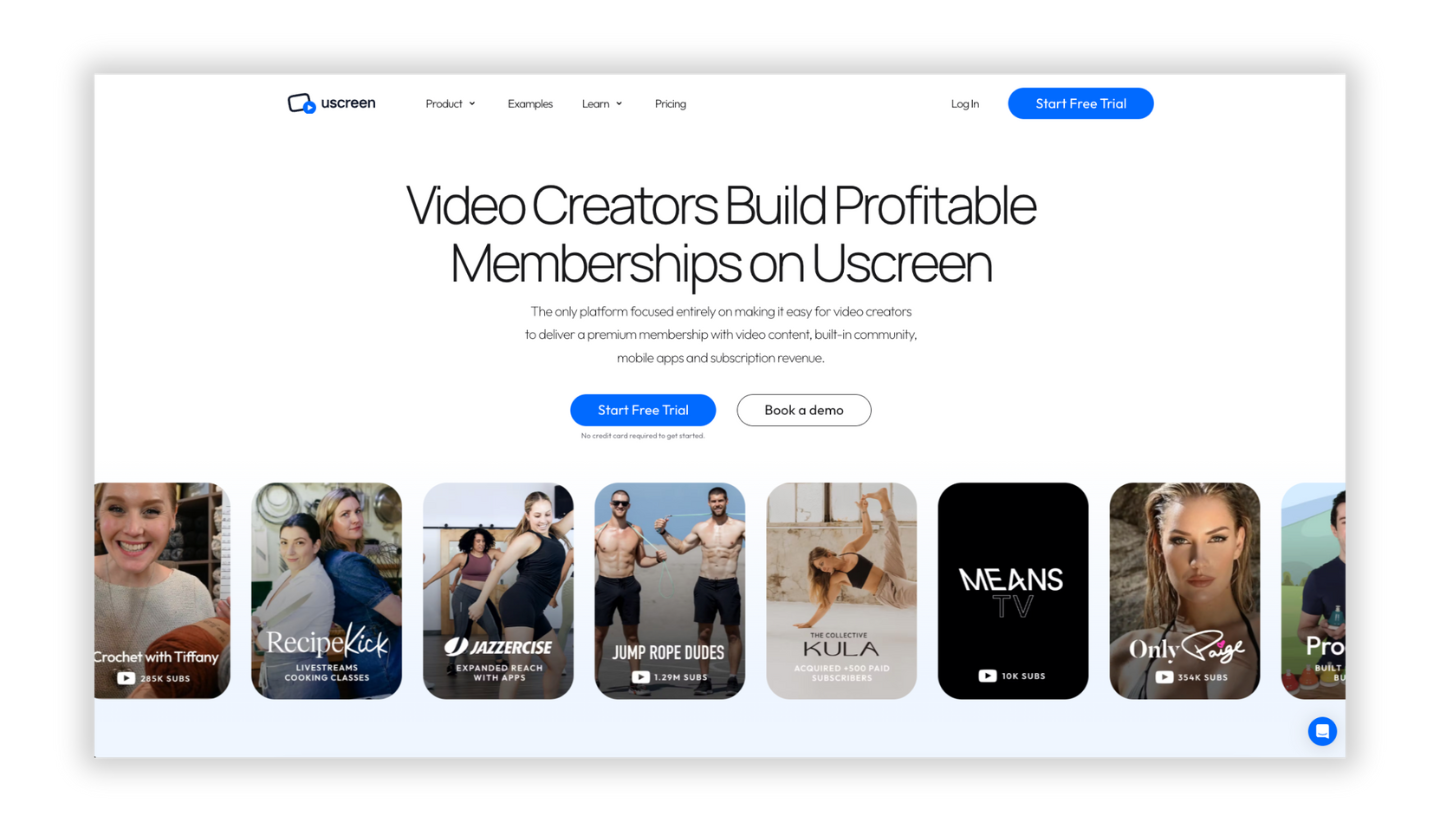
Similarly to Switcher, Uscreen offers SVOD and gated content solutions to its users, but it is limited in several ways. For example, Uscreen creators have to build their custom site from scratch through Uscreen's platform. Additionally, Uscreen does not currently offer 4K video, unlimited livestreaming, or a suite of video creation tools.
There are a handful of ways creators can earn income when sharing or live streaming on Facebook.
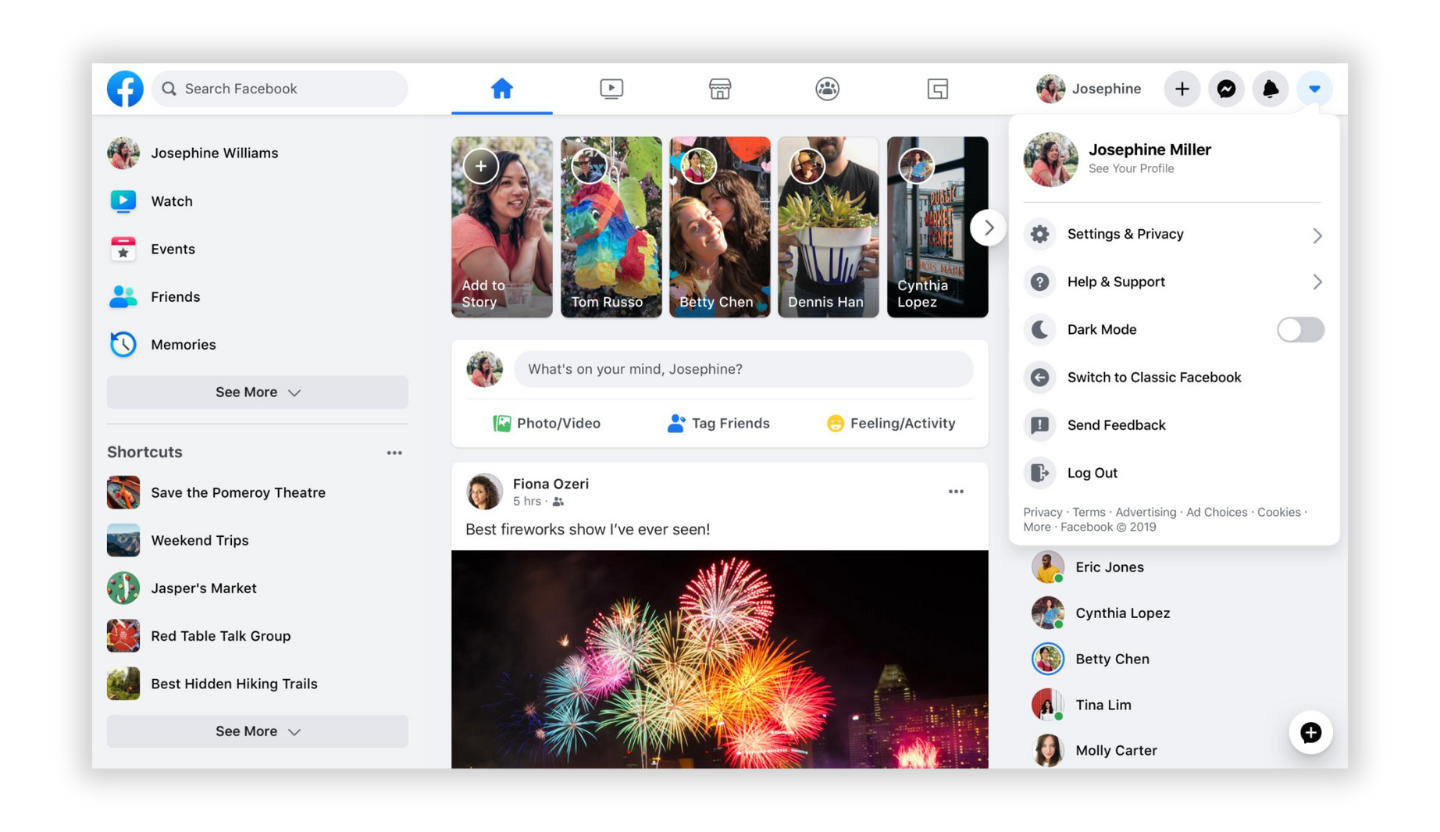
First, creators can integrate short ads, known as ad breaks, into their videos. These ads provide a source of revenue, and creators earn a share of the ad revenue based on factors like video views and audience engagement.
Through the Facebook Fan Subscriptions program, creators can offer subscription-based access to exclusive content for a monthly fee. This provides a direct and steady income stream from dedicated fans.
During live streams, viewers can send virtual gifts called Facebook Stars as a form of appreciation. Creators can earn money based on the number of Stars they receive.
While these are great ways to earn income, (and who can argue with Facebook’s brand recognition and reach?) there are still some limitations with customization and integrations.
YouTube
YouTube is ... a behemoth. It's the largest video hosting platform, ever, and the second-largest search engine. It's great for new creators looking to find and grow an audience. There are plenty of reasons to use YouTube for video content, including monetization tools.
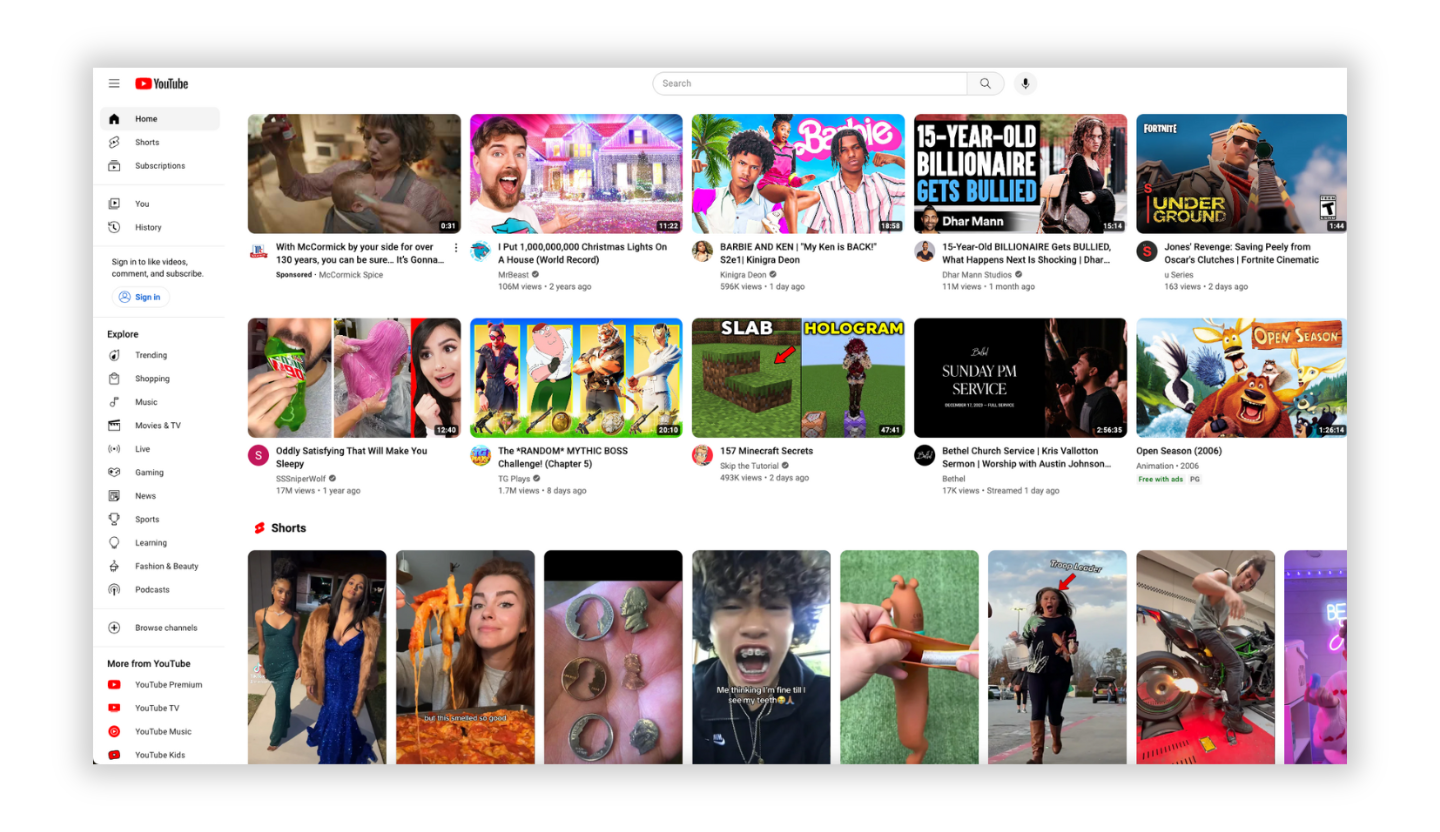
We’ve already covered a key way that creators can earn revenue off this widely popular platform, but here are a couple more:
YouTube Shorts Fund
YouTube introduced the Shorts Fund to reward creators making engaging content on YouTube Shorts, a platform for short-form videos.
Affiliate marketing
Creators can include affiliate links in their video descriptions and earn a commission for sales made through those links.
Super Chat and Super Stickers
During live streams, viewers can purchase Super Chats and Super Stickers to highlight their messages or show support. Creators receive a portion of the revenue.
Note: It's important for creators to frequently review and comply with YouTube’s policies and guidelines for monetization, as eligibility requirements and features tend to change.
Twitch
Twitch hosts a wide range of video content, from gaming streams and creative content to live music performances and educational broadcasts. This diversity allows users to find content that matches a wide variety of interests.
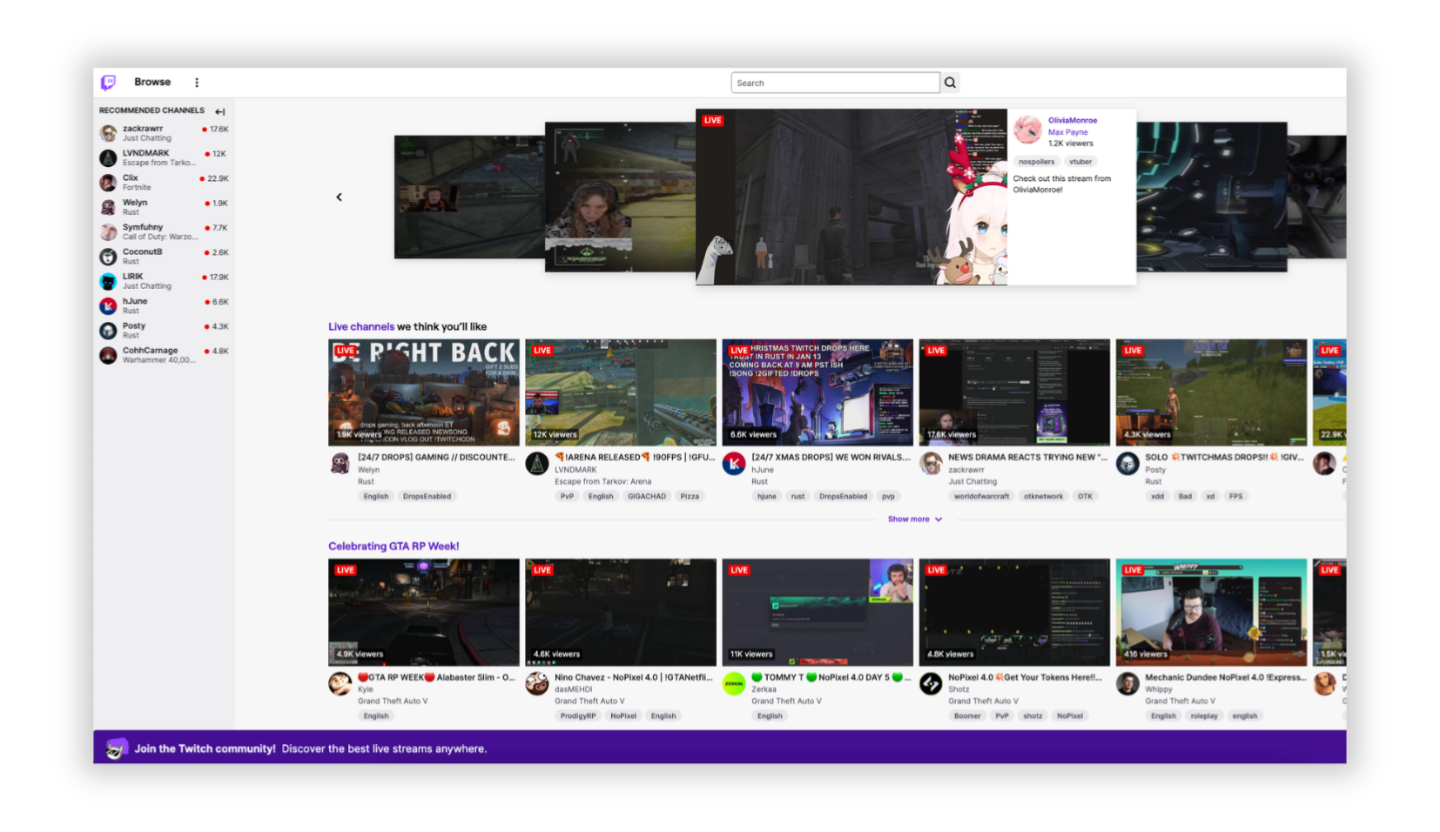
Successful Twitch monetization often involves a combination of methods, including building a loyal and engaged community. And here are a few ways creators can do that.
Twitch Prime Subscriptions
Viewers with Amazon Prime can subscribe to a Twitch channel for free each month using their Twitch Prime membership. Streamers receive a share of the revenue, and this doesn't cost the viewer anything extra.
Exclusive content and private streams
Some streamers offer exclusive content or private streams for subscribers, encouraging more viewers to subscribe to access premium content.
Bits and Cheers
Viewers can purchase Bits and use them to cheer during a stream. Streamers earn a share of the revenue from Bits used in their channels.
There are other ways to generate income on Twitch, but these three are some of the more popular.
Kick
Kick is pretty new to the game, having just launched in 2022, and this streaming platform focuses on looser moderation and higher revenue shares for its streamers.
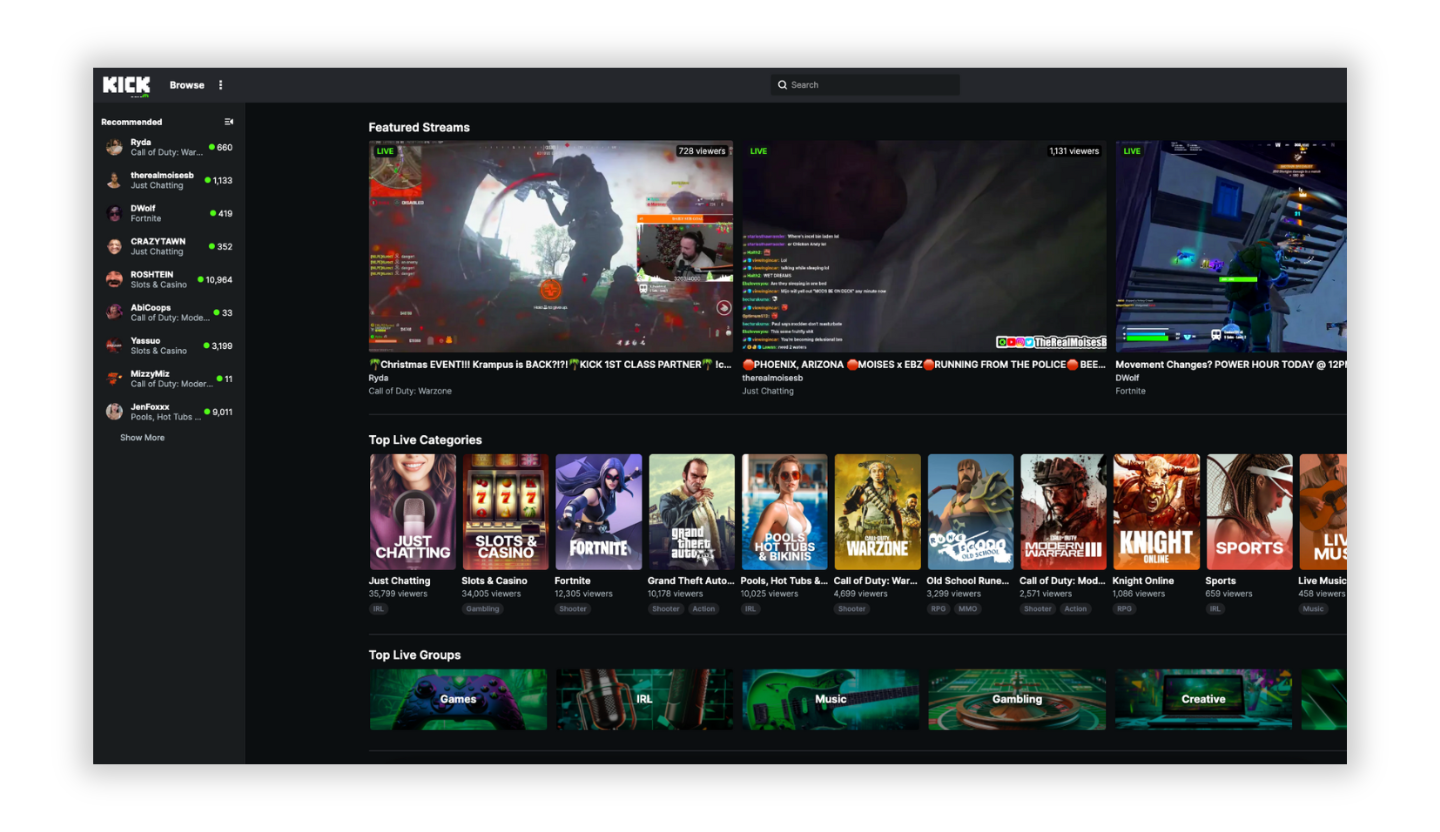
Kick’s revenue-sharing model allocates 95% of the earnings to the streamer, with the remaining 5% going to the platform. This unique approach even influenced Twitch to adjust its revenue split to a 70:30 model for certain creators.
Additionally, Kick put forth a proposal suggesting hourly payments for all streamers who meet specific criteria. These conditions include the streamer being active for a minimum of four hours daily over a month, maintaining engagement with the chat, having a visible webcam, and being a legal adult. Streamers who fulfill all these requirements receive compensation based on the number of hours they spend streaming, as outlined in the proposal.
But, with Kick only being a year old at the time of this article’s publishing, it’s still too early to tell if this platform will prove a viable video monetization option for content creators in the long run.
Patreon
Patreon launched a decade ago and, in a lot of ways, it's the OG monetization platform. It provides a suite of business tools for content creators to run subscription services, grow their following, and earn recurring income, while also offering rewards and perks to its paid subscribers.
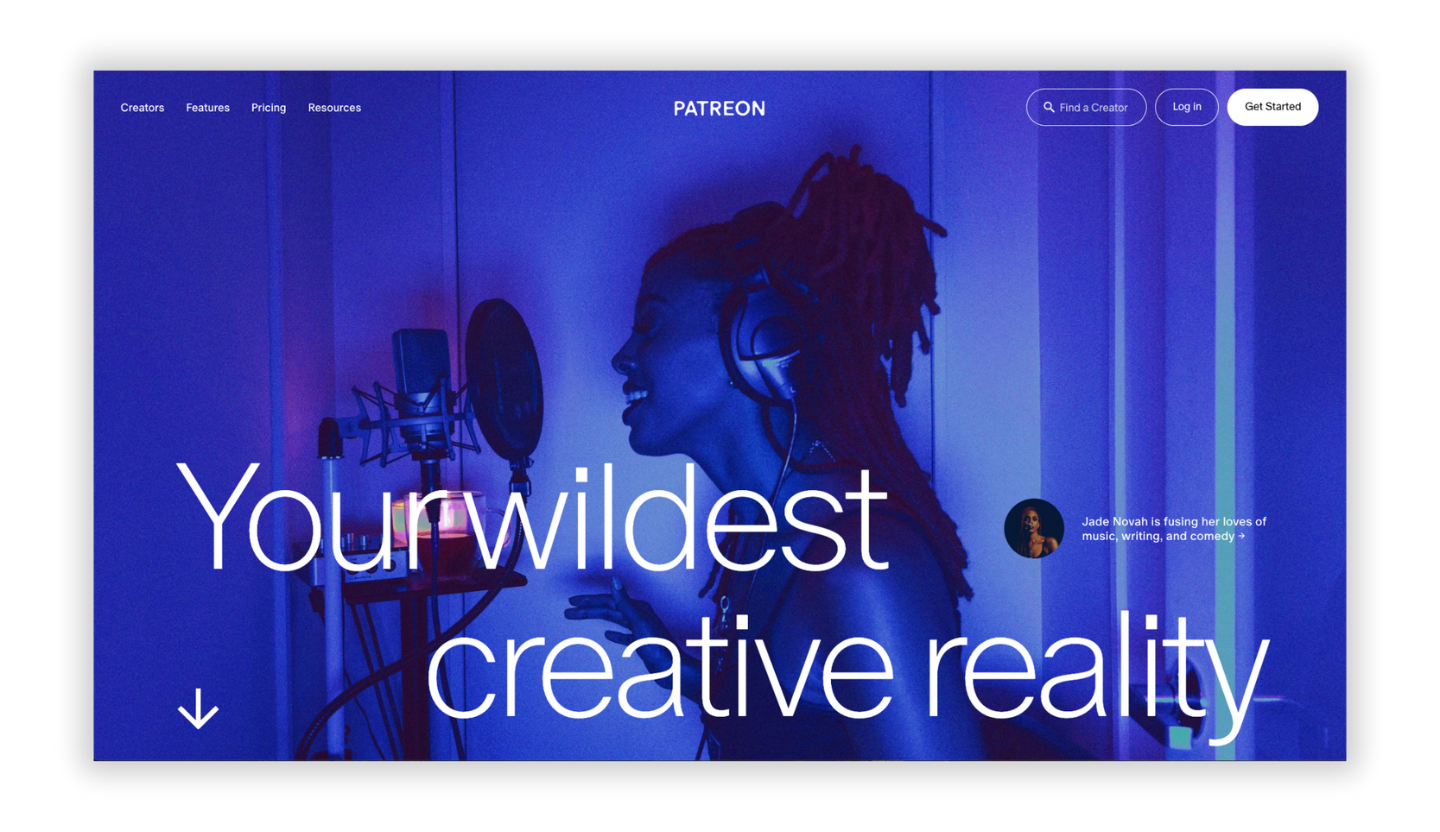
The site boasts many ways that its content creators can earn income and unlock creative (and business) growth through five core features:
-
Multimedia publishing
-
Native video hosting and previews
-
Exclusive podcast feeds
-
Personalization options
-
Analytics and insights
Patreon also offers a ton of resources to its members, including a creator hub, newsroom, help center, and more. However, it’s important to note that, with all these integrations and support, fees have skyrocketed to meet overwhelming demand.
Create, share, earn!
Now that you understand the different types of video monetization, as well as the popular video monetization platforms available, the ball is officially in your court.
Before you take your shot, though, make sure the platform you choose has the features you need to effectively monetize your content and grow your channel.
(Psst: Switcher Studio could be exactly what you need. Sign up today and use our features for two weeks, risk-free!)
Subscribe to the blog
Sign up to receive notifications whenever a new blog post is published. You may unsubscribe at any time.

Share
About the Author
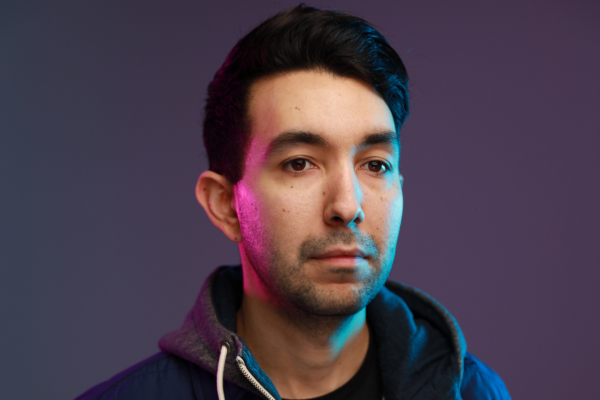
Julian R. Vaca is an actor, writer, and marketer. His work has appeared in The Nerd Daily, Writer's Digest, and more. His debut Young Adult series "The Memory Index" is available wherever books are sold. Connect with Julian on Instagram: @JulianRayVaca
All posts by Julian R. Vaca
